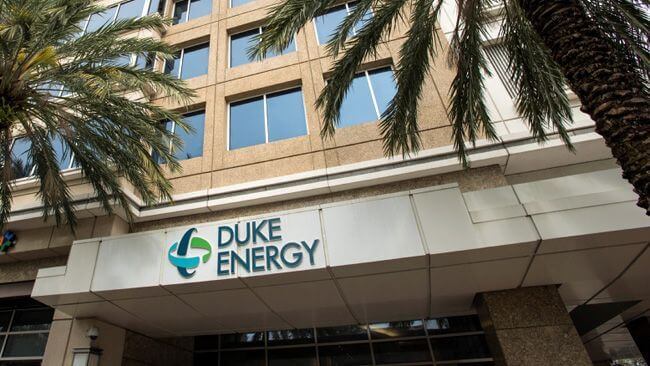Duke Energy has commissioned its new Duke Energy + Electrada Fleet Mobility Microgrid in Mount Holly, North Carolina, an electrification center for commercial and public electric fleet vehicles. The project is the first of its kind in the U.S. to offer a zero-emission, carbon-free microgrid option for fleet charging.
The center serves a dual purpose as a model for utility-grade, reliable fleet electrification that can help businesses meet sustainability goals and as an active charging site for light-, medium- and heavy-duty electric fleet vehicles.
Duke Energy and Electrada are prepared to support any commercial fleet’s journey to fleet electrification by helping them design, deploy and manage a reliable and customized electric fleet depot solution, using any configuration or capacity option shown at the Duke Energy + Electrada Fleet Mobility Microgrid. Vehicles can either be connected to the Duke Energy grid, charging from the bulk electric system; or powered by 100% carbon-free resources through the microgrid at the Duke Energy Emerging Technology Office on-site in Mount Holly.
“As companies with sustainability goals seek new ways to decarbonize their operations, vehicle fleets have increasingly become a top focus,” says Harry Sideris, president of Duke Energy. “The Duke Energy + Electrada Fleet Mobility Microgrid is open and ready to help with opportunities for cost savings, new charging options for zero-emission vehicles and strategic guidance.”
Electrada, an electric fuel solutions company, provides all the required capital “behind the meter” on behalf of fleet owners. The company delivers charging to fleet EVs through a performance contract, eliminating the complexity and risk that fleets face in transitioning to this new source of fuel. The Electrada model provides secure and seamless conversion for fleets that helps ensure grid integrity, guarantees performance and reliability, and removes electric fleet charging price volatility.
“While fleet electrification in Europe and Asia has taken hold, this critical mobility microgrid effort in partnership with Duke Energy will help address and solve those electrical and performance issues unique to North America that challenge commercial adoption today,” says Kevin Kushman, CEO of Electrada. “This collaboration proves that electric mobility at scale is compatible with reliable and renewable grid service and will build trust in fleets that are ready to embrace the transition.”
The Duke Energy + Electrada Fleet Mobility Microgrid includes six total fleet charging stations ranging from 120 to 300 kW along with two Level 2 chargers. It is the first depot designed for medium- and heavy-duty trucking in the U.S. that can be charged from the grid or switched to 100% renewable energy generation when integrated with the Mount Holly microgrid, which includes solar, battery storage, hydrogen and other types of generation.
The site’s functionality allows Duke Energy to study charger use, performance, energy management and integration. Identifying EV charging technologies and how they may be used to power any type of fleet with vehicles ranging from Class 1 (pickups) to Class 8 (over-the-road haulers) is modeling for the industry a clear, integrated and cost-effective path to fleet electrification. Testing various models of charging scenarios enables energy load shaping, which can be used to ensure proper grid or microgrid distribution.
Daimler Truck North America LLC (DTNA), a manufacturer of medium- and heavy-duty trucks, will join Duke Energy and Electrada as a founding participant in the fleet EV charging program at the Duke Energy Emerging Technology and Innovation Center. One of DTNA’s largest East Coast manufacturing facilities is located directly adjacent to the center; this proximity creates an ideal opportunity to utilize the chargers at the site and demonstrate charging technologies to customers visiting the plant in the future.





